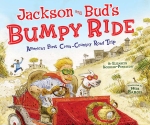1. Hook your readers with a vivid scene right away. How? Read on.
2. Specific senses will get your reader to experience your story.
Example: Gary D. Schmidt’s Lizzie Bright and the Buckminster Boy begins like this: Turner Buckminster had lived in Phippsburg, Maine, for fifteen minutes shy of six hours. He had dipped his hand in its waves and licked the salt from his fingers. He had smelled the sharp resin of the pines. He had heard the low rhythm of the bells on the buoys that balanced on the ridges of the sea. He had seen the fine clapboard parsonage beside the church where he was to live, and the small house set a ways beyond it that puzzled him some. Turner Buckminster had lived in Phippsburg, Maine, for almost six whole hours. He didn’t know how much longer he could stand it.
3. Show the protagonist’s problem right away. Turner’s is shown in his feelings shown in the last sentence.
4. Character dialogue must move the story forward. If it’s just talking back and forth to talk, remove it.
5. Use adverbs sparingly. Change them to verbs.
Example: He said loudly. Change to: He shouted.
6. Create suspense with tension. Author Steve Mooser employs the element of time. He says, “If the bad guys are due into town at sunset, if Friday is the day of the school play – that’s the easiest way to build tension.” In Frank L. Baum’s The Wizard of Oz, the hourglass shows how much time Dorothy has to live.
David Almond created atmosphere with action verbs and specific images in Heaven Eyes:
Mud. Black, sticky, oily, stinking mud. It was January who dared to lean out of his raft first. He dipped his hand into what should have been water. He touched mud, black mud. It oozed and dribbled from his fingers. The raft settled, and mud slithered across its surface, onto our clothes. It seeped through to our skin. It seeped through the tiny gaps between the doors. I took my flashlight out, switched it on, saw the doors disappearing as they sank . . . saw that we were being slowly sucked down into the sodden earth . . . Our feet, our hells, our knees were caught in mud . . . I grunted, whimpered, groaned. I slithered forward. . . My head filled with the mist and darkness.
7. Everyone loves humor. The unexpected is funny. Two unlike characters or objects placed together can be funny.
8. Read your piece out loud. Is it balanced? Not big chunks of description or pages of pure dialogue, but evenly paced?
9. Eliminate vague words: Possibly, many, pretty, terrible . . .
10. What has the protagonist learned or how has your character changed in some small way?
After several drafts, put away your manuscript for a while. When you return, read it aloud with fresh eyes. Are you having fun? If not, rework the story until it’s just right. You’ll feel that tingle of excitement when it works!






 Zoie
Zoie